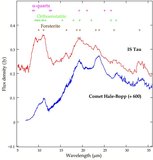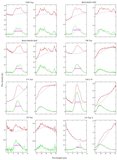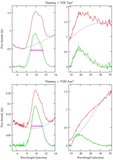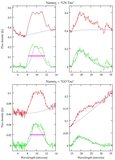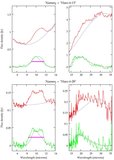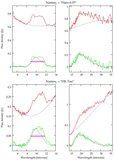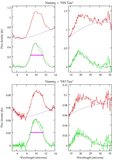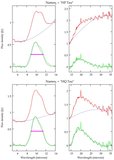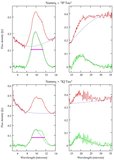Image Details
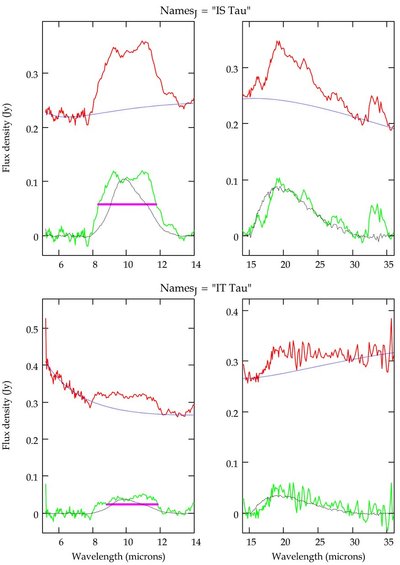
Caption: Figure 2.
Example silicate-feature spectra from our Taurus mid-IR spectral survey. The calibrated spectrum is in red; in blue are the points used for the polynomial baseline fit, and the fit baseline itself is shown in a dotted blue line. In green is the equivalent width per channel—the spectrum, minus the baseline and divided by the baseline, scaled arbitrarily for the display. The dotted black line is the composite equivalent width per channel spectrum that represents "pristine" (interstellar-like, submicron, amorphous silicate) grains, with the two silicate features scaled independently to match those from the target spectra at 9.9 and 21.7 μm. As discussed in Section 3.2, the "pristine" features themselves are the averages of those features in LkCa 15 and UY Aur. The full width at half-maximum of the 10 μm feature is indicated by magenta bars. Spectra have been chosen to illustrate the wide variety of crystalline content among the sample objects: from grains that are dominated by olivines, pyroxenes and silica (V955 Tau and IRAS 04187+1927), to grains with smaller concentrations of minerals (IRAS F04192+2647 and DR Tau), to grains with silicate features indistinguishable from those of interstellar grains (UY Aur and LkCa 15). Also included are two examples of unusual spectra: those of ZZ Tau, showing that its emission is heavily dominated by silica, and of UX Tau A, in which the silicate features are joined by PAH features at 11.2, 12.0, and 12.7 μm. The complete set of 84 Taurus Class II spectra, presented in the same manner, is available in the online-only supplementary material.
1 of 43 images
Copyright and Terms & Conditions
© 2009. The American Astronomical Society. All rights reserved.


